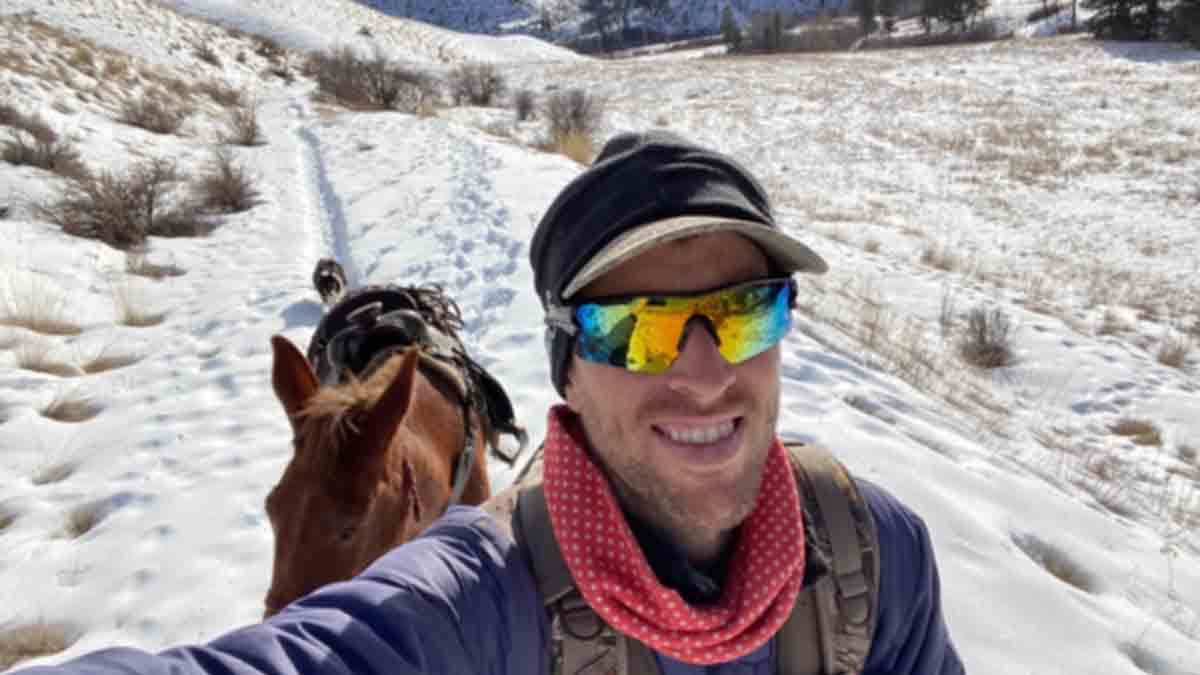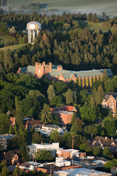Historic Apple Quest
February 05, 2025
Unkempt groves of fruit trees are the last vestiges of historic homesteads once scattered throughout central Idaho’s Frank Church — River of No Return Wilderness.
Most of those homesteads were acquired by the U.S. Forest Service, which demolished the buildings and infrastructure and allowed nature to reclaim the landscape.
Andrew Armstrong — superintendent of a University of Idaho research facility located at the heart of the wilderness area, the Taylor Wilderness Research Station — has been on a quest to find those old homesteads and preserve long-lost heritage apple varieties that were planted to sustain early settlers. Partnering with Kyle Nagy, superintendent and orchard operations manager of U of I’s Sandpoint Organic Agriculture Center, Armstrong aims to propagate those abandoned trees and reestablish them in a new orchard at Taylor.
For the past two winters, Armstrong, with the College of Natural Resources, has traveled throughout a 15-mile radius of his remote research facility in search of orchards, accompanied only by his mules. He’s taken tree cuttings from four forgotten homesteads in the Big Creek drainage, which is the largest tributary of the Salmon River’s Middle Fork. His cuttings, known as scions, are the width of a pencil and about a year old, each harboring three to four buds. Nagy, with the College of Agricultural and Life Sciences, has grafted the scions to winter-hardy, Russian rootstock and intends to help Armstrong plant the Taylor orchard this spring.
The 15-acre pasture where the orchard will be located already has a water right.
“There are a lot of old ranches that have these really old apple trees and they’re starting to die off,” Armstrong said. “My idea was to collect specimens of these trees and send them off to Kyle for grafting and have a conservation orchard.”
Washington State University will perform genetic testing of the specimens. If any of them prove to be rare or unusual, Nagy intends to also plant them at the Sandpoint orchard he oversees. The trees should grow to be about 20 to 30 feet tall, bearing fruit within three to seven years, and they should remain productive for more than a century.
Heritage varieties often have unique flavor profiles or genetic characteristics that are useful to breeding programs, such as drought tolerance or disease resistance.
“Given the era when these trees were planted, there’s definitely the possibility of some interesting varieties out there,” Nagy said. “It’s good to be able to hold onto those varieties for future generations because once that variety is lost, it’s gone forever.”
Late winter is the best time to collect scions, as the trees are still dormant but are poised to develop buds for the spring. Armstrong collected his initial batch of scions about two years ago. Nagy grafted the cuttings and stored them over the winter in Sandpoint. Unfortunately, voles chewed the bark, killing them all. Armstrong returned to the same homesteads last February and March and sent cuttings from 17 trees to Nagy, who successfully grafted 31 new saplings from 11 trees. This winter, Nagy is storing the saplings in a protected area.
In the future, Armstrong hopes to gather scions from historic homesteads throughout the Middle Fork area.
“We’re trying to keep the history of the place alive,” Armstrong said. “These old ranches have been really special places for keeping some of these heritage varieties alive.”
Taylor has six existing apple trees, as well as a pear tree and several cherry trees. The fruit trees provide a supplemental food source and cider for the U of I student researchers who live in wood-heated cabins at the ranch from August through November. The ranch is Armstrong’s primary residence year-round.
Taylor Wilderness Research Station is the most remote research facility in the lower 48 states, accessible only by a 32-mile hike or by flying in on a bush plane. It’s served by the sole remaining airmail route in the contiguous states.
Purchased by U of I in 1969, the ranch provides invaluable baseline research data from an area that’s largely untouched by humans. The College of Natural Resources has used it for big-game research, studies on predators such as wolves and mountain lions, research on one of only two bighorn sheep populations in the state where no sheep have been introduced by humans and for taking scientific measurements on stream ecology and dynamics. The Idaho Department of Fish and Game operates a stream trap on Big Creek where Pioneer Creek runs through the ranch to study salmon and steelhead.

About the University of Idaho
The University of Idaho, home of the Vandals, is Idaho’s land-grant, national research university. From its residential campus in Moscow, U of I serves the state of Idaho through educational centers in Boise, Coeur d’Alene and Idaho Falls, nine research and Extension centers, plus Extension offices in 42 counties. Home to more than 12,000 students statewide, U of I is a leader in student-centered learning and excels at interdisciplinary research, service to businesses and communities, and in advancing diversity, citizenship and global outreach. U of I competes in the Big Sky and Western Athletic conferences. Learn more at uidaho.edu.






